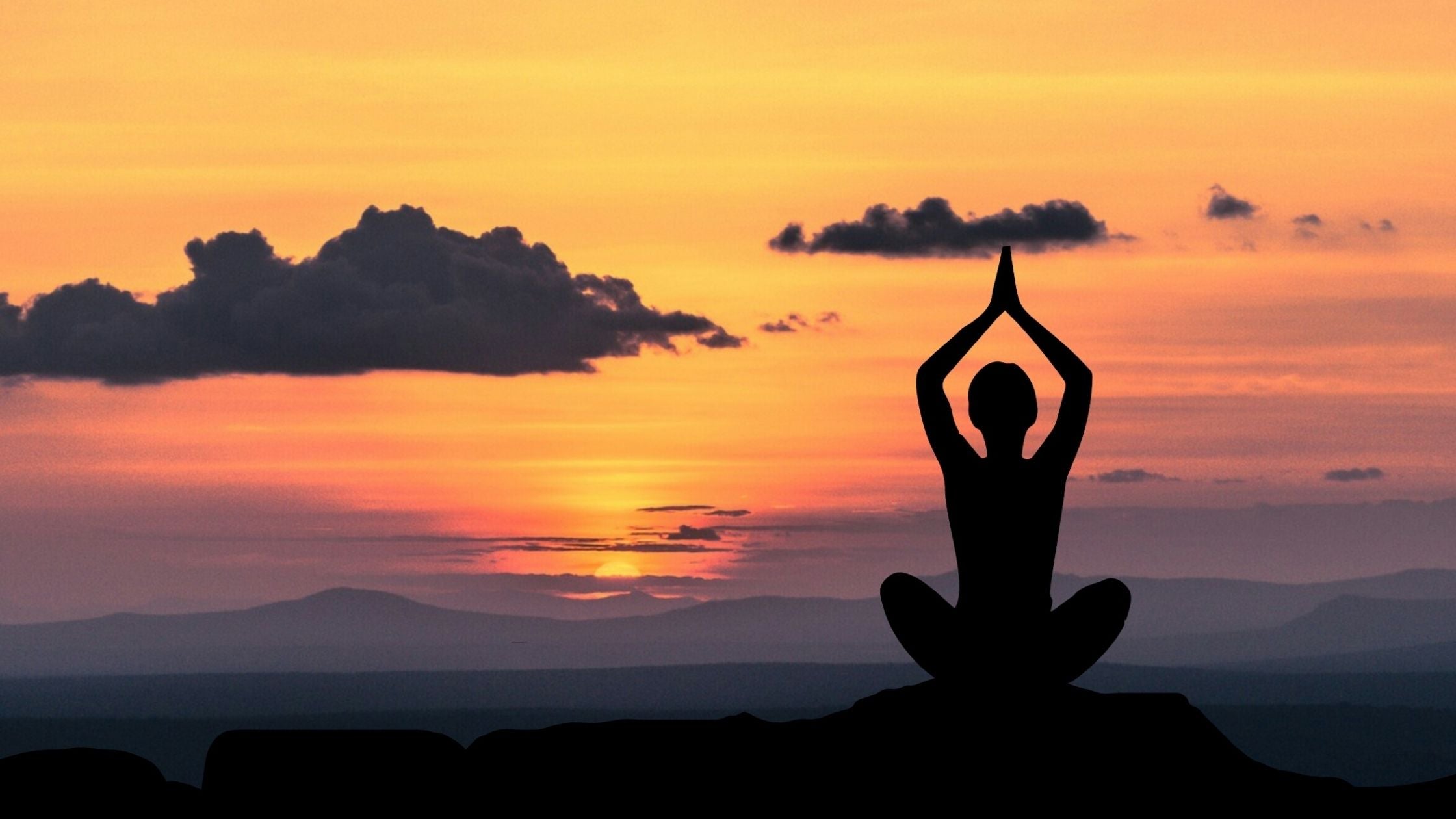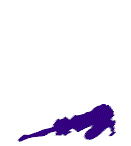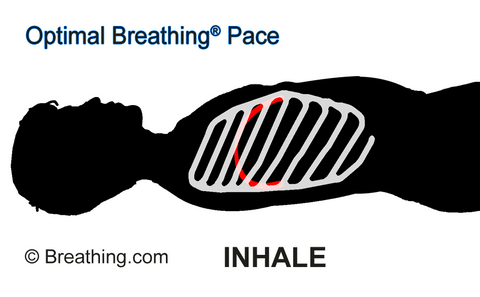About what might be regarded as a basis for developing what Michael Murphy in his
Future of The Body calls "ordinary psycho-social development". or a full bodied home base to return to prior to traveling out into the spaces of all possibilities. A grounded center to return to safely following investigations of altered states of consciousness and
meta-normal experiences. "
YES, Michael Murphy! I strongly believe it is very advisable to develop one's breathing FIRST, or at least simultaneously BEFORE we venture out into the ungrounded random ways of the world, regardless of their potential for spiritual expansion or cosmic exploration. In other words, build the landing strip to return to BEFORE you take off into the stratosphere, so that you have a familiar and dependable place to return to; inside yourself. Let your body be your sanctuary. Life is often about getting out of balance. So let's make sure that what we believe is home base is balanced
Both
Donna Farhi, author of the excellent The Optimal Breathing Book and "Rama Vernon", a co-founder of Yoga Journal (and my former minister's wife) have stated that they taught Yoga for over 20 years - Donna - and 40 years Rama, and neither knew
how to breathe right or did not think to teach others. With the phenomenal and well deserved popularity of yoga in the past decade it behooves us to alert everyone about this issue as there may well be millions of students and teachers with an unclear or distorted idea of healthy yoga breathing practices.
Bad Breathing Training
While on board a cruise together in March of 2013 Yogi Amrit Desai, - one of the last living Yoga masters of the 60s invited me to privately view his almost finished video about his life and accomplishments. A very special man. His Curriculum Vitae is many pages long. We have several mutual friends. He shared with me that "Yoga is popular in the western world but what is popular is not yoga."
There are many "styles" of yoga including bad, good and great yoga. Durckheim observed that "even though many yoga teachers try to help their students relax before giving them breathing exercises, they do not realize that the 'letting-go' required for deep relaxation can be achieved
"only after long practice."
There's a wide range of yoga teachers out there. One has many choices in weekend wonder courses and can then call one's self a yoga teacher. As Donna Farhi and Leslie Kaminoff will attest there may well be tens of thousands of yoga instructors and millions of students uncertain about proper yoga breathing practices. The greatest tragedy of this is that many teachers are first to defend their breathing development proficiency but alas, the last to prove it. Very little information is needed or wanted because "information" including anatomy (including Coulter's Yoga Breathing book) and physiology is often confused because most have no internal relationship about what great breathing looks, sounds and feels like. (Coulter told me personally that he was a Parkinson's victim when he wrote that book). What is needed is the physical energetic experience of good breathing. Chocolate or salt must be tasted/experienced. A feeling can be worth a million well meaning but still inaccurate words. I know as I learned this the hard way.
Cautions to be judicious and respectful of yoga breathing practices abound in the literature on hatha yoga. And it does indeed seem from anecdotal reports of explorers in this field that the rhythm and record of our respiration resonates throughout the body. It seems to accentuate whatever is in the mind, whether it be benevolence, or malevolence, harmony or disharmony, virtue or vice. On the negative side, experienced teachers report that quirkiness of any sort, gets accentuated in students who go too far. ‘It might be an abusive streak, laughing inappropriately, speaking rudely, flightiness, twitchiness, or nervous tics. Right to left physical imbalances also become exaggerated. Unfortunately, novices often close their ears to warnings; having become addicted to their practice, they will not be denied. Competent teachers of hatha yoga will be watchful of these simple matters and wary of tutoring refractory students. Even the
beginning exercises discussed in this chapter should be treated with respect.
"Apart from psychological concerns, the special physiological hazards of breathing exercises is that they can cause problems without giving us traditional signals warning us against doing something harmful. In athletics, the practice of asana, experiments with diet, or just tinkering with any subject in the physical world, we depend on our senses to tell us that we are exceeding our capacity or doing something inadvisable. But breathing exercises are different. In that realm we are dealing with phenomena that our senses, or at least our untutored senses, are often unable to pick up, even though they can still affect the body. And because of this, advanced exercises should be undertaken only by those who are adequately prepared.” H. David Coulter,
Anatomy of Hatha Yoga p 131. Yet Dr. Coulter's breathing chapter is decidedly Sympathetic Nervous System biased.
From a Breathing Times subscriber:
Breath is the unifying principle of the three systems of mechanics, metabolism, and mentality. It is the psychopharmacological link between conscious and unconscious states. Each of the three mechanical aspects of the breath have specific neurotransmissional function. Any technique(s) that emphasize(s) one aspect of the mechanism exclusively will shift neurometabolism accordingly. Since neurometabolism is a volatile equilibrium, this is not trivial. Yoga practices are designed for this purpose, stimulating a specific aspect or relationship of aspects. I realize that contemporary yogis don't always explain it this way, and I think that also leads to misuse and abuse. Right knowledge is yoga or union. That union is from bringing together all aspects, and applying discernment. Jim Nettles.
A few words from Else Middendorf.
"All the yoga ways of breathing come from the male way. The Eastern way of thinking is to find God in one direction, in a male way. 'The way is directed. I go there and I have to go; I must go'. This way needs will; That is also the reason why, in this case, breathing is connected. it has something to do with will. This male way of being needs will. When this is the basis, the breathing is under the law of the will".
Mike adds. "This can also transform conscious breathing into "self-conscious" breathing. It gets out of balance."
more about balance
Pranayama
"Just as lions, elephants and tigers are gradually controlled, so the prana is controlled through right practice. Otherwise the practitioner is destroyed." Verse 15 of Chapter 2 of the Hatha Yoga Pradipika
From Mike: This is a warning about
pranayama. I stay away from 98% of it.
A comment from a recent radio talk show listener featuring Mike. "A close friend of mine became very ill in India studying Pranayama, my guru Amma says you have to be very developed before you undertake it, It can be harmful."
Pranayama is said to begin spontaneously with the perfection of hatha yoga positions, and this way of breathing then and only then facilitates the advanced techniques. But just which hatha yoga positions are the "perfected" ones and why? And just how long might it take to develop them. Who is qualified to say which one is which?
I recently -2013- took a week long prana class from Yogi Amrit Desai. He really knows what he is doing.
The word Prana translates as something akin to "life force". The second part of the word is "Ayama", meaning "non-restraint". The practice of Pranayama is meant to free the life force, not restrain it or over energize it as with many power" yogas. The techniques are meant to open up the inner life force... which may not feel like a "deep" breath. I think there's a big misunderstanding about these techniques.
Another way of putting it is that among Yogis different postures are taught. Every posture allows the breath to take a certain direction, for every direction the breath taken has a different result. It is posture and thought, both together, that help to direct the breath in a certain direction. As breath is a life-power, whatever center it is directed to it brings to a new life.
Warning to those who don't already breathe naturally, who carry a great deal of tension in their chests, backs, and bellies. People who practice pranayama exercises without good teachers or much experience can easily hurt their diaphragms and other breathing muscles. They can also cause imbalances in their internal chemistry. These pranayama are intended for the more experienced practitioner, and are intended for deeper states of meditation (they often work by increasing the body's capacity to increase blood CO2 - which can increase alpha rhythms and aid meditations).
According to a former colleague and psychotherapist who also teaches yoga, "pranayama is meant to be a spiritual practice, and is not meant as a way to take deeper, more so called "healthy" breaths. The body needs to be well-prepared, through various practices, before the pranamayakosha, or energy body, can work with the pranayama practices appropriately.``
But how do you know that the teacher is qualified to judge when the student is ready for the next step? We might well have a much different teacher in a licensed accountable psychotherapist or Amrit yoga instructor then we do in someone that has taken a 3 day pranayama training.
Almost every pranayama I have witnessed is about control (recall Middendorf's "male" of the breath) from the obvious to the most complex levels. To me pranayama today is largely for altered states of consciousness though there are clinical studies in process that are quantifying many health attributes when practiced correctly. Recent brain research shows that altered states arise from conditions that push the brain into something other than normal. Lung and breathing mechanics problems manifest in varied ways from this forced/male way of addressing the breath. In my opinion most pranayama is not appropriate because it does not allow first to learn about
healthy natural breathing that is developed just for the sake of breathing. Pranayama, toning and chanting, while being potentially quite beneficial, can often constrict the lung volume and
hinder breathing sequencing and balance as well as invite throat blockages similar to certain weight loss programs using breathing as the primary focus and advertised frequently on TV. They can help or not and are safe or not.
programs using breathing as the primary focus and advertised frequently on TV. They can help or not and are safe or not.
From a newsletter reader
"Dear Mike: I do breathing exercises (pranayama) but I want to know what I can do to make my breathing better. How can I make each breath longer, without having to think about my breathing? thanks!
"From a newsletter subscriber: "I had started Alternate Nostril Breathing Pranayama (with no retention) and I was doing it for 10 minutes in the morning and 10 minutes in the afternoon for 25 days. In these 25 days, I felt very light and nice, suddenly lately I started to feel pressure with pain in my head as soon as I start Alternate Nostril. I feel headache and pressure. I can see my face and eye are looks swollen. My spine is straight. I am doing it correctly. Do you know why this is happening? I have stopped the practice. Please reply to me, I was taken to emergency, but doctor could not figure out what was the problem." MP
I recommend that if you are going to experiment in pranayama that you first develop strong balanced, healthy, natural breathing so your nervous system knows where to return to after any altered state experience; that you know where “home base” is; Do not learn to fly solo without first learning how and where to land. Practice makes permanent, not necessarily perfect. Perfect practice makes perfect. Leading edge yoga teachers are learning how to teach optimal breathing to ensure this perfect practice.






